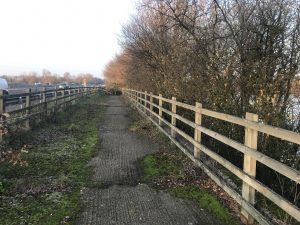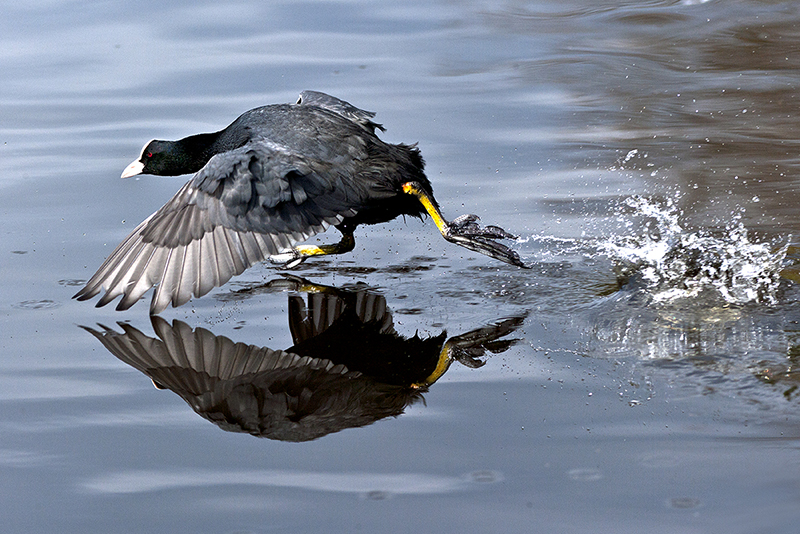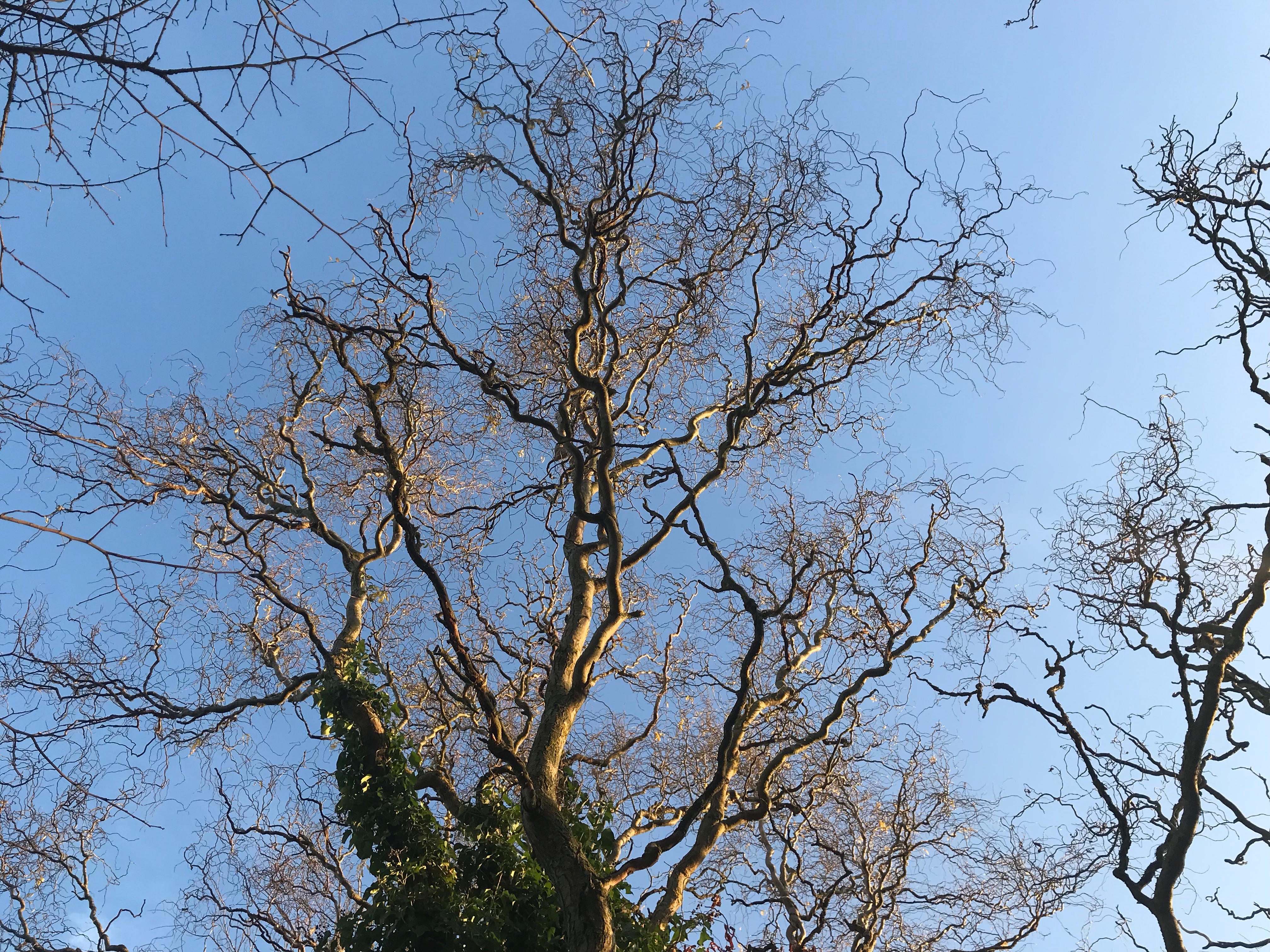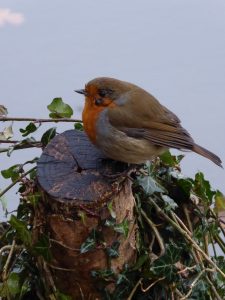Some lakes and ponds start as ways of managing a local flooding issue or as a means of enhancing a local park (whilst again helping drain the surrounding land). Broadwater lake is one of these. Set in a large multi-user park, the lake gives a glimpse of a wilder environment.
With a few minutes spare Francis and I stopped and strolled round the lake, it only takes 20 minutes or so (unless of course you get distracted by the local wildlife).
First surprise was the number of Moorhen, over 30, and their apparent tameness.
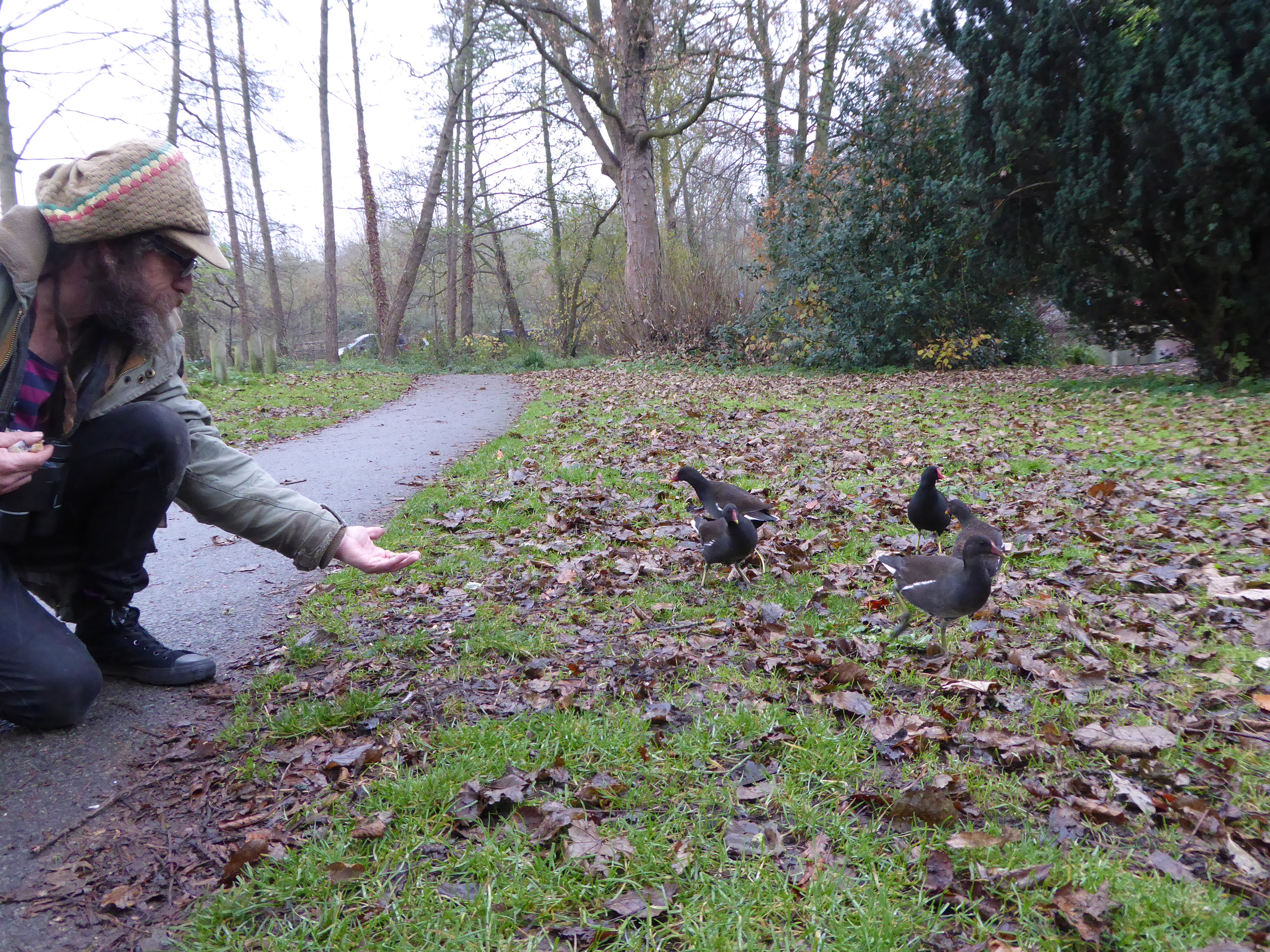
I probably need to explain that my fellow writer, Francis, long ago adopted the Moorhen as his totemic bird! Many of his friends know that he is probably the only person in the world to be tattooed with an image of a Moorhen! Yes, really!
I am hoping that he will illuminate us all on the wonders of this charming bird…………..
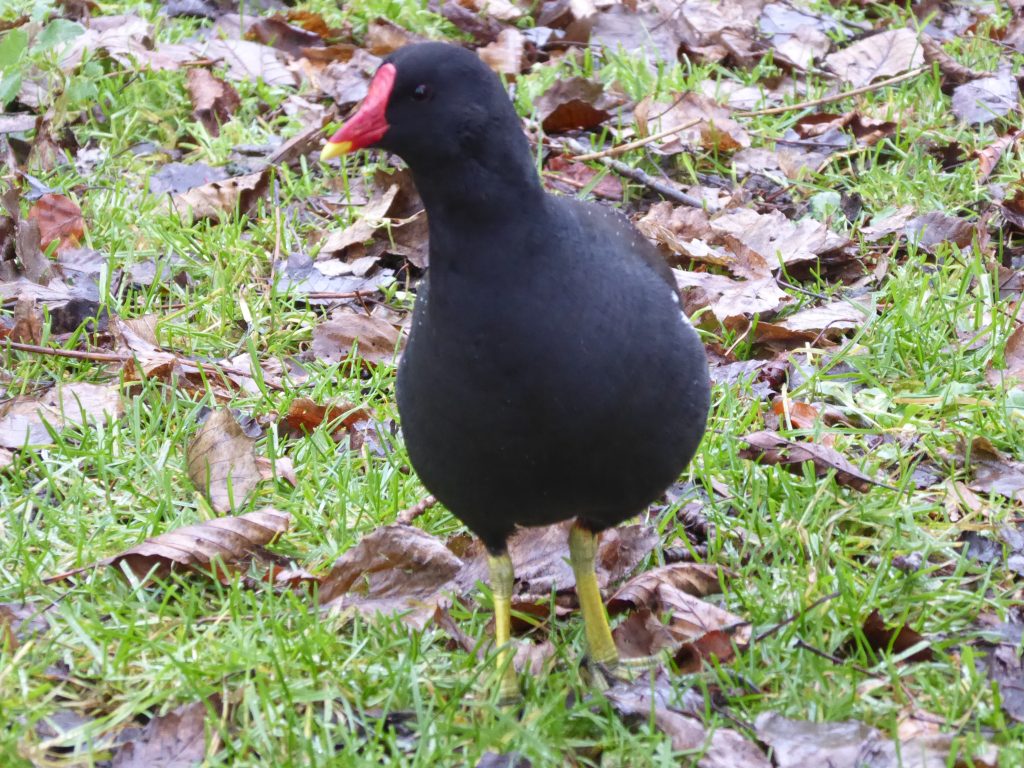
Coincidentally my winter visiting Moorhen, Morris (I like to think it’s the same bird!), has reappeared in my garden to feed on apples and the spillage from feeders.
On the water were the expected Mallards and Canada geese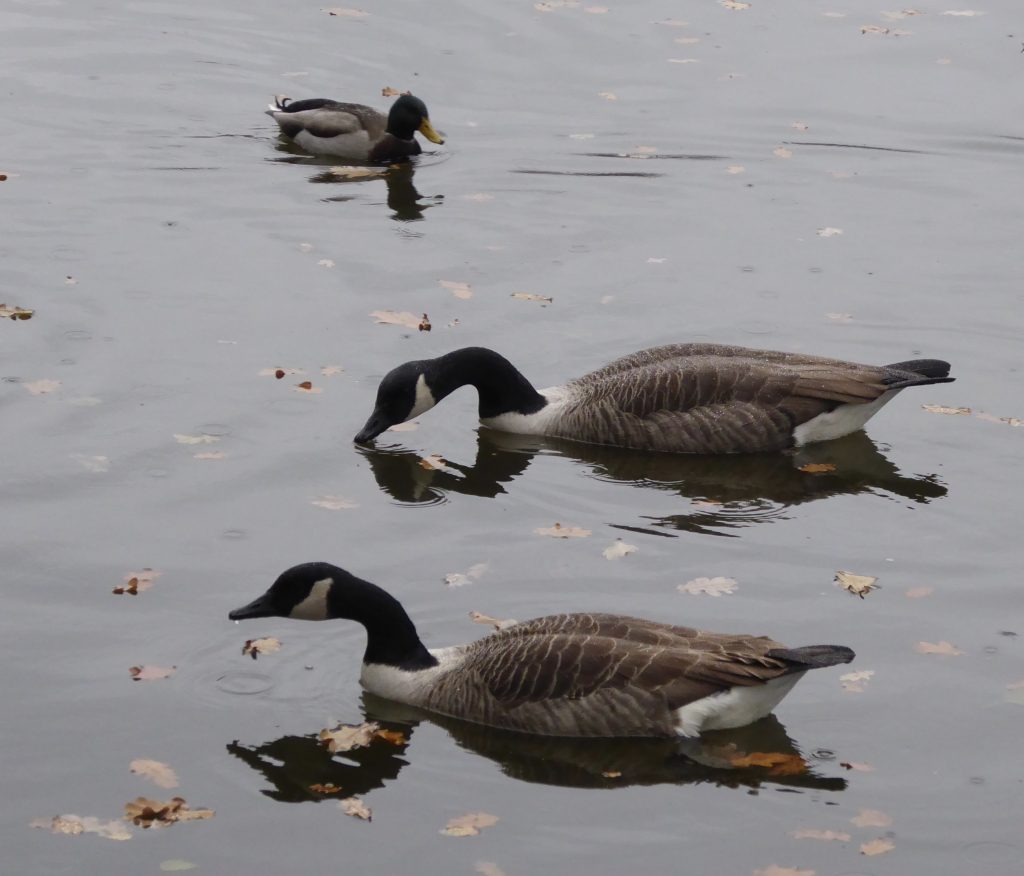
but further out were Tufted ducks and Great Crested Grebes, always lovely to see.
Some of the bank had been left with mature trees and a scrubby fringe which allow more vulnerable and nervous wildlife a bit of refuge.
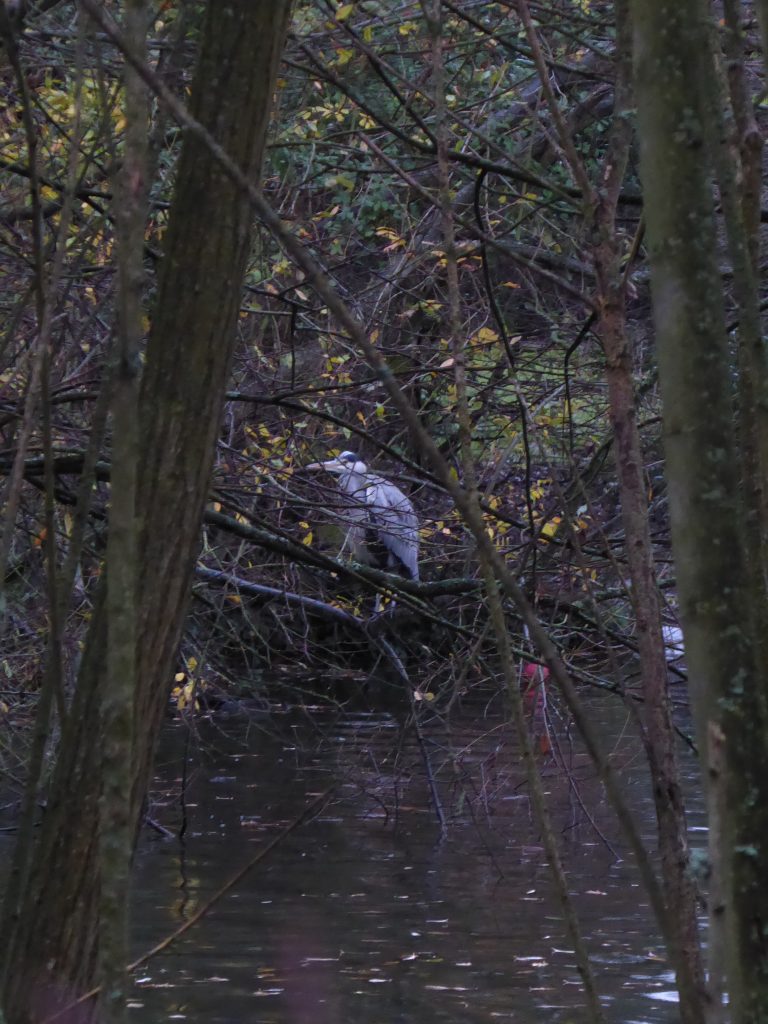
Lots of people run round the lake or walk a dog but take some time and move quietly and you will be surprised at what you will find.

